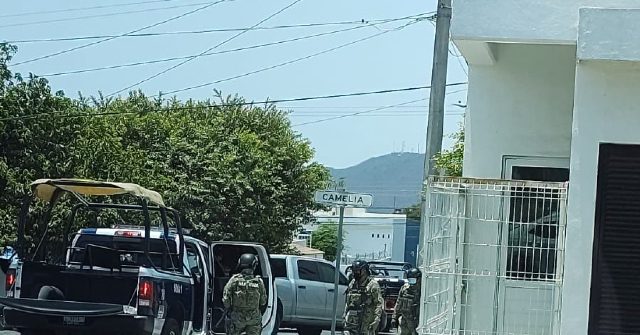A recent violent incident in Colima, Mexico, has sparked concern about the ongoing wave of hyperviolent crime that the government seems unable to control. In a brazen attack, gunmen stormed a clandestine cockfighting venue on the outskirts of Manzanillo, leading to the tragic deaths of four men and injuring three others. The attack highlights the grim reality of public safety in Mexico, contrasting sharply with government claims of improved security. Witness accounts suggest that the gunshots erupted without warning, creating panic among attendees, while official communication from authorities remains scarce, leaving much ambiguity surrounding the event’s details.
The ambush occurred on a Sunday night during an informal cockfighting gathering, raising questions about the nature of such underground events and their vulnerability to violent crime. Reports indicate that while four men lost their lives to the gunfire, it remains unclear how many additional casualties may have been inflicted upon the assailants during the ensuing confrontations with military and police forces, who arrived in response to the chaos. As the gunmen fled the scene, witnesses recorded the tumultuous events on their phones, further complicating the narrative with various unofficial accounts of what transpired.
This incident is part of a troubling trend of escalating gun violence in Mexico, with mass shootings in public spaces becoming increasingly common. Just prior to the incident in Colima, separate attacks in Tabasco resulted in the death of seven individuals, underscoring a pattern where two different groups of gunmen engaged in violent confrontations. Furthermore, incidents in Queretaro and Mexico State resulted in even greater fatalities, with a total of fifteen people killed and twenty injured across these recent attacks. Such statistics raise alarms about the government’s ability to effectively combat organized crime and ensure public safety.
Despite the government’s insistence on progress in combating crime, public perception contradicts these claims, as violent episodes continue unabated. Attacks targeting crowded venues, including bars and social gatherings, signal a grim reality where civilian safety is perpetually at risk. Local populations are increasingly confronting the dire implications of rampant gun violence, with many feeling powerless to protect themselves in environments seen as unsafe. This complex cycle of violence and government inaction breeds a sense of despair and fear among the populace.
The lack of clear communication and timely responses from authorities further exacerbates the situation, highlighting systemic issues within the security apparatus. Confusion regarding the identities and fates of those involved in violent altercations points to a troubling lack of transparency from law enforcement. As incidents of extreme violence proliferate, citizens are left to rely on social media and unofficial channels to piece together information. This issue not only erodes trust in government agencies but also creates a pervasive atmosphere of uncertainty that permeates daily life in conflict-prone areas.
As violent crime persists in Mexico, the role of journalism remains crucial in shedding light on these urgent matters. Journalists such as Ildefonso Ortiz and Brandon Darby continue to report on cartel-related violence and public safety issues, aiming to inform and raise awareness of the deteriorating situation. Their online presence and commitment to documenting these events serve as vital resources for a public desperate for accurate information. The ongoing crisis of violent crime remains a pressing concern as Mexico grapples with the challenges of governance, safety, and the rule of law in an environment increasingly dominated by fear and terror.

